Hima People of Eastern Africa and their Culture
Who are the Hima People in east Africa? The Hima name is associated with various peoples and political entities in the Great Lakes are of Eastern Africa.
In recent history the name Hima indicates a sub-group of the Tutsi, originally a Cushite group from the Ethiopian highlands, who entered the area perhaps in the 1300s.
There was a king of Rwanda (a Tutsi Kingdom) named Gahima (1500). [P. Ngologoza, Kigezi and its People, EA Literature Bureau, 1969.]*
Some writers think the name Hima is also associated with a Nilotic people who came down from the Sudan along the Nile through Uganda. They conquered the Bantu people in what is now southwest Uganda and the neighboring portion of Zaire.
They were absorbed by the Bantu people and took up the local Bantu language. Their name in the language is the primary identification of their origin.
One tribe (or social group) of people in Ankole, Uganda, are called Hima (Bahima). The Hima speech is classified in the Ethnologue as a dialect of Nyankore (Nkore/Nkole). The Ethnologue notes, however, that this speech form "may be a separate language."
The relationship of those speaking Hima and other varieties of Nyankore would likely be the same as with the dialects of the Cushite Tutsis and Bantu Hutus speaking Rundi/Rwanda.
There is no listing for the Hima in Tanzania. It appears the Hima are limited fairly much to their original settlement area.
Bahima’s history has been shrouded in mystery for a long time. The mystery stems from John Hanning Speke who wrote in 1863 that Wahuma (Bahima) were white people, more civilized than black people or Negroes and entered Uganda from Ethiopia occupied by a ruling white race.
Other Europeans added that Bahima were more intelligent with superior qualities and born to rule. Colonial explorers, missionaries and administrators like Samuel Baker, John Roscoe and Harry Johnston in Uganda shared these views (G. Prunier 1995).
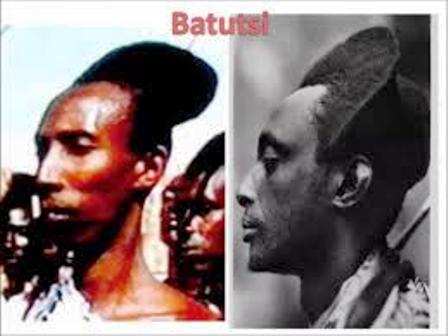
Because of racial prejudices against blacks or Negroes Europeans concluded that the civilizations they found in Uganda were developed by white people.
They gave credit to Bahima simply because they resemble whites physically such as sharp, narrow, pointed and long noses.
Bahima have hidden their true history of precarious nomadic life and absence of material wealth to take advantage of these attributes so that they continue to dominate other Ugandans. Before attempting to demystify the myth let us understand this:
Bahima, Batutsi, Bahororo and Banyamulenge are cousins with three principal characteristics. (1) Whenever they move to a new place, they adopt local names and local languages, (2) they dominate the indigenous people and (3) their men do not marry women from other ethnic groups except from their own.
They do the latter to avoid being penetrated by others so that their secrets about dominating them remain hidden. On the other hand they encourage their women (except those from the ruling class) to marry the elites from other ethnic groups so that they win the men over to Bahima side or they get access to their political and other secrets.
Let us resume our story. Bahima’s claim according to Speke that when they left Ethiopia or Abyssinia they wandered in the interior and eventually crossed the Nile into Bunyoro. In Bunyoro “… they lost their religion, forgot their language…changed their national name to Wahuma [Bahima] … [but] retain a singular traditional account of their having once been half white and half black…” (J. H. Speke 1863 & 2006). In other words the only thing Bahima could remember when they met with Speke is that they are originally white people. Do you believe this? I don’t.
Before becoming president, Yoweri Museveni was interviewed by John Nagenda. In the course of the interview Museveni is reported to have said that while the people of south Uganda are linguistically the same, they are racially different. He suggested the matter be investigated (New African March 1986 & Eric Kashambuzi 2009). And it has been.
Regarding their origin, studies have confirmed that there is no trace of any connection – cultural or otherwise – between Bahima and Ethiopians.
There are however many credible sources explaining that they entered Uganda from Bahr el Ghazal in southern Sudan with long horn cattle which they still graze (Eric Kashambuzi 2008 and 2009). In fact when you look at Bahima closely they resemble the people of southern Sudan including the Dinkas. This is the first demystification.
The second demystification is about Bahima’s race. Many still insist openly but largely in subtle ways that they are white people using physical features as noted above as evidence. They also still insist that they are lighter-skinned with thinner lips and are more intelligent and therefore superior than other Ugandans and have more beautiful women as Ms. Kesaasi reminded us as recently as April 2010.
To confirm that they are actually darker and have thicker lips than Bantu (J. Hiernaux 1975) you just take a random sample and you will not fail to see who is lighter with thinner lips. About women, beauty is in the eye of the beholder and this matter should stop at that. Serological (blood) studies have also revealed that Bahima are black and not white people (J. D. Fage).
To cling to their ‘white’ origin and deny their Nilotic Luo ancestry, Bahima are arguing that they are descendants of white Bachwezi and not black Nilotic Luos adding that it is the Basoga who are Luos. But there is a problem here as well. First, Bachwezi were not white but black people (G. K. Kahangi 2003). So far it has been very difficult for Bahima to prove any connection between them and Bachwezi.
In fact B. A. Ogot, one of the distinguished and world renowned historians (he served as the general editor of the eight volumes on African history sponsored by UNESCO) has written that “… the important point to emphasize is that, according to the historical reconstruction we are outlining here, the Bachwezi were not Bahima or Luo: they were a Bantu aristocracy who emerged in western Uganda in the fourteenth and fifteenth centuries” (B. A. Ogot 1999).
Put another way, other researchers have concluded that Bachwezi were an outgrowth of the established Bantu population who began placing more emphasis on herding.
Chronological studies of earthen works in western Uganda show that the oldest sites were occupied by mixed farmers who specialized into cattle herding by the time they occupied the Bigo site confirming that these were Bantu people (Eric Kashambuzi 2009; G. S. Were & D. A. Wilson 1972).
However, Bahima (and their cousins) have continued to take advantage of their mystic links with semi-divine Bachwezi to maintain political hegemony over Bantu including Bairu and Bahutu (Toyin Falola 2000, Eric Kashambuzi 2009).
John Reader has added that Bahima and their cousins have clung to the myth that “… they are lighter-skinned and (it is implied) more intelligent people.
This hamitic myth has a long and enduring history; indeed the notion of a separate origin for the pastoralist [Bahima] elites, and their superiority over the cultivators of the lakes region, persists to this day.
The idea was reinforced by colonial regimes and since independence the elites themselves [in Uganda, Rwanda and Burundi] have seized every opportunity to perpetuate it” (J. Reader 1997).
Time has come for Bahima and their cousins to drop the idea that they are light-skinned, more intelligent and superior and born to rule because they are not. The governance of Uganda since 1986 and increasingly of Rwanda since 1994 has shed abundant light to confirm that they are not born leaders.
The third demystification is about Bahima’s superior civilization in Uganda. Because of prejudice against blacks Europeans concluded that civilization in Uganda including material culture came from outside and was brought by Bahima.
This has been dismissed because Bahima’s nomadic life and standard of living marked by light clothing including cow-hide sandals and temporary grass thatched huts (G. S. Were & D. A. Wilson 1972) do not lend support to the idea of a superior civilization.
J. E. G. Sutton has added that seasonal movements of pastoral people in search of pasture and water do not encourage the development of advanced material cultures or centralized systems (B. A. Ogot 1967).
That they had an inferior civilization is confirmed by the fact that they adopted local languages, names, religions and even the Bahutu title of king (Mwami) in Rwanda. Thus, Bantu had a more advanced civilization than Bahima and Batutsi when the two groups met in the lakes region.
Let us conclude with this: We all want to live together in peace, security, prosperity and dignity. Instead of focusing on ethnic differences let us turn our attention to Article II of the Universal Declaration of Human Rights (1948) which states “All human beings are born free and equal in dignity and rights.
They are endowed with reason and conscience and should act towards one another in a spirit of brotherhood”.
When these rights and freedoms are denied you begin to see resistance gaining an upper hand and that is what we are witnessing in the Great Lakes Region. It won’t go away until we accept, adopt and genuinely implement Article II just quoted above.
Hima and Tutsi
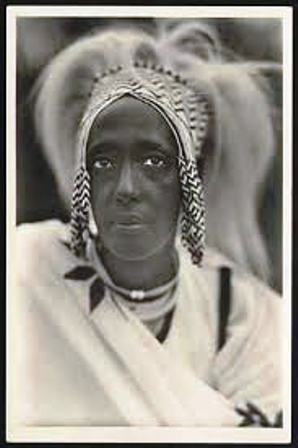 Hima and Tutsi
Hima and TutsiThe general view of the Tutsi is that they have come from a Cushite background in northeastern Africa. Some scholars have seen connections with Nilotes. Over the centuries the similarities in the situations of the Nilotic and Cushite upper class possibly led them to be more closely associated.
One Somali correspndent had some thoughts to contribute on this connection.
"I am Somali who has a limited knowledge about Hima people in central Africa. There is a Somali clan of Gaaljecel, whom others call Xima or Hima or Xiimaay Hima. This clan is very nomadic and traditional people. I bet the name is same origin [Abdir, Fort Mcmurray, AB Canada]."
In modern times, the Tutsi-Hima appear to be so closely associated that they can be considered one general class across the variety of speech in the various political divisions of the Lakes Region. Their Bantu speech forms are very similar.
President Yoweri Museveni of Uganda is a member of the Hima group of Uganda. He has even been the target of charges that he is part of a broad Tutsi-Hima plot to conquer the region. In current discussions of this matter, the Hima are commonly considered a sub–group of the Tutsi. In Uganda, a comparable tribe, or social group, to the Hutu are the Iru (Bairu).
Language References
I find no listing for a language or dialect of Hima or Kiga in Tanzania, but Holoholo is related, and stated in the Ethnologue to be also in Zaire, but interestingly enough, not in Rwanda or Uganda!
Nyankore and the speech of the Hima is related to Kiga (also spelled Kyiga, Chiga, pronounced Chiga), a language group of Southern Uganda related to Kinyarwanda. I note in the Ethnologue that one dialect of Rwanda is called Tshiga. This would be the same language group.
The degree of lexical similarity of Nyankore to Kiga is in the range of the Ethnologue’s classification for one language (normally 90-95%). I note in the listing for Kiga ("Chiga") (Uganda), however, that mutual intelligibility is shown as only 72%, which would be low.
Speech and Politics
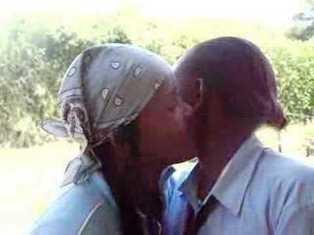
Note that what are classified as "dialects" are often political designations. Thus speakers of the Tshiga dialect are most likely simply members of the same language/ethnic group called Kiga in Uganda who just were on the wrong side of the border when the Germans and English drew it!
This is a problem we must watch for all over Africa, even being aware that when we say, for instance, the "Zambia Tonga" and the "Zimbabwe Tonga," etc., that we are probably indicating political distinctions, not true people group distinctions.
One factor that complicates the matter, however, is that ethnicities change,a nd when two divisions of a people get separated by flood, war, empire boundaries, etc, they can in fact grow different and become different peoples. That is one way that ethnicities develop.
Traditional marriage among the Bahima People of Uganda
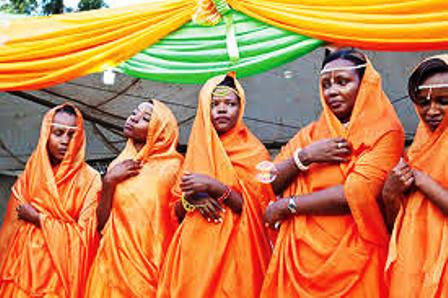 Traditional marriage among the Bahima People of Uganda
Traditional marriage among the Bahima People of UgandaPreparing to be a bride among the Bahima
TO the average person, it looks like any other hut in the Ankole region. But for those in the know, it probably harboured a bride. Joseph Batte explores the notion of the fattening hut and marriage among the Bahima
GRANTED, world class architecture was never a strong point for the Bahima. Reason? Their homes were built with practical usage in mind. Besides, being traditionally nomads meant that they were constantly on the move.
They constructed circular huts using sticks and grass. It probably took a Muhima less than half a day to collect all the building material; nonetheless it required some skill and the hut could last for years.
For ages, the Bahima lived in collective quarters, which were mainly centred on the hut of the head of the family. They mainly have two spacious rooms, one used as a bedroom and the other for any other business.
The inside of the hut was tailor-made to suit the taste of different families. It was in such huts that a Muhima bride-to-be was kept. Sometimes an extension called ekitu was constructed for the bride-to-be.
Men measured a woman’s attractiveness by her size. The more obese the woman, the better. Another reason for fattening the bride was to create the impression that she came from a well-to-do family. It was also a sign of well-being.
Even today, a young woman is prepared for marriage in ways guaranteed to fatten her up. In the past, during that fattening period, nobody got to see the bride apart from her close family members.
Origins of Bahima People of Uganda
The cattle-keeping community who live in western Uganda, are more known for their unique attachment to their cattle. They are classified as ‘Hamiticised Negro cattle people of north Africa origin’ by anthropologists.
Their human and cattle genetics indicate that they and the Batusti of Rwanda probably originate from the Central Sahara area. Despite the influx of foreign cultures and religious influences, their traditional marriages have stood the test of time. The Bahima still love practicing their traditional marriages, thanks mainly to the elders who still emphasize the need for cultural marriages.
Prohibitions and preferences governed the choice of mates. To chose a mate families considered caste, wealth and kinship. For example, the caste distinction has always prohibited a Muhima from marrying a Mwiru.
A socially recognised marriage could only take place between a man and a woman who were then both members of the ruling Bahima.
Kingship prohibitions prevent a Muhima from marrying his father’s brothers and mother’s sisters’ daughters. However cross-cousin marriage was permitted. The principal duty of the wife was to bear children. Therefore, a man endeavoured to a wife from a family in which women were prolific.
Identifying a wife among the Bahima People of Uganda
Identifying a future wife was a complex and intriguing exercise among the Bahima. According to Keith Bunanukye, a Muhima elder and David Musinguzi, an authority on the Bahima culture, servants were supposed to inform their masters of the homes that had beautiful women. According to them, a son did not have to comb the countryside in search of a prospective wife.
“I know today it sounds strange, but in our culture, neither the girl nor the boy had the freedom of choosing their partner. The pattern was for both the parents of the boy and the girl to arrange the marriage, sometimes without the knowledge of the persons concerned,” Bunanukye says.
This was because Bahima girls were prohibited from travelling alone. Whenever a Muhima girl moved, she was always in the company of her brothers or sisters, and you never really got to see her because she was always covered. If you went visiting and saw the girls, they would cover themselves.
Most people used to know about the existence of beautiful girls in a family when they were still young. And they would start wooing her when she was aged six or seven.
Once a future bride had been identified, the groom’s family would send an emissary to deliver a message to her family. The messenger was known as Kyebembera or Kateerarume.
Bride price deposit among the Bahima People of Uganda
The messenger had to be someone who was well known to both families. If the message was received well, which was more than not because it was the wish of a parent to see their daughters get married, the boy’s family would deposit some cows at the girl’s home.
These cows were known as enkwatarugo (the cows that keep the kraal).
They signified that you were serious about marrying the girl. They were also a symbol of wealth.
Most importantly, the cows were to feed the girl until she was ready for marriage, which was usually at the age of 16. The four cows were also used as security to ‘tie down’ the young girl and fend off interest from other suitors.
Tradition dictated that once the girl had matured, the enkwatarugo cows would be returned to the suitor’s family. However, the offsprings of the cows were retained by the bride’s family.
Thereafter, both families would start negotiations on the bride price. On reaching an agreement, the bride’s family would choose the date on which to pick the cattle agreed upon.
On that day, the bride’s people would go and hand pick the best cattle from the groom’s or his family’s herd. However, out of fear of losing their best cows, some families would hide the healthiest cows. Sometimes the girl’s people would send spies earlier, to identify the best cows.
Customarily, a girl could not be offered for marriage when her elder sister or sisters were still unmarried. If a marriage offer was made for a young sister, it is said that the girl’s parents like the biblical Jacob’s father in-law Laban would manipulate events and give away the older daughter instead of her younger sister.
No bride-price among the Bahima People of Uganda
If the suitor was poor and didn’t have cows for enkwatarugo (bride price), he would lay claim to a girl by smearing her with butter. This custom was known as ousigyiro.
However, carrying out this act successfully depended on the mutual desire of both parties — the man and woman. The man was supposed to catch the girl and smear butter over her entire body! Thereafter, the woman went and explained to her parents what had happened.
The intimacy between the young couple was considered almost as close as that brought about by the pre-marital sex. It revealed the fact that the woman was anxious to marry the man for she had secretly met the man! However, on the whole, orusigyiro was not widely practised.
Once your father broke the news that your future wife had been identified, often there was excitement. Who is this woman, my future wife? What does she look like? Often times, young lads would hide in the bush to take a sneak peek at the future wife. But woe betide you if you were caught in the act, you would be made to pay a heavy fine.
Okujugisa ceremony among the Bahima People of Uganda
This is a very important event in the marriage tradition among the Bahima. When the herdsman is to be married, his bride’s family select 10 cattle from his kraal.
During the ceremony, men from both the groom and bride’s side engage in a witty debate and poem recitation in a bid to out-compete each other.
Sometimes they engaged in bitter disagreements, resulting into quarrels. But in the end, the cattle would still be selected and a date would be agreed upon when the groom’s family would deliver them to the bride’s home.
After okujugisa, the fattening process begins, as the bride is prepared for okuhingira, (give-away ceremony). President Yoweri Museveni refers to it as the Ankole wedding ceremony that is as good as a church wedding.
Get fat quick among the Bahima People of Uganda
As soon as the cattle for bride price had been selected from the groom’s kraal, (Okujugisa) the girl was entrusted to her grandmother, to begin the fattening rituals.
One of the aunts, maternal or paternal, also took on the responsibilities of fattening the girl. Sometimes they would take her with them to their homes and fatten her from there.
The fattening utensils comprised a collection of well-polished and smoked ebyaanzi (milk gourds) of different shades.
She would spend months, up to six months in some instances with the fattening specialist, doing no heavy work, but eating. She would be coaxed into drinking milk in different forms like amashunu (unfermented milk) and thick fermented milk (amakamo).
She was given a large gourd and tasked to gulp it all down before sun set.
She was fed on ghee and roasted fatty goat meat. With such feeding, a young woman weighing 65kg at the time of identification for marriage could be as heavy as 160kg in only three months!
The girls did not like it but they had no option they had to drink it under watchful eye of an auntie who would be compelled to cane or rebuke her saying: “Why don’t you take the milk? You want to go while looking like a blade of grass?”
By the time the grannies and aunties would be though with fattening her, she would be too fat to the extent that she could hardly walk. By the time she got married, the young woman would be so fat that she could only waddle.
She was not only kept in the house to be fattened, it is also widely believed that a woman who stayed indoors for long periods away from the glare of harsh sunlight became more beautiful.
On her wedding day, onlookers would comment on how beautiful she looked, noting with approval the folds in her skin caused by her obesity, and the difficulty with which she walked!
Red Ants among the Bahima People of Uganda
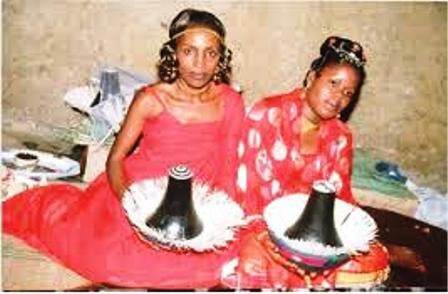
To instill fear in the bride and keep her inside the house during the fattening period, she was always warned of the ferocious red ants that would bite her.
The bride was told that once stung by these tiny insects, she was not supposed to extract the fangs from the skin until she died!
This custom is called okumbanda empazi or okutambuuka empanzi. The intention was to make the bride committed to the marriage since she had fetched the family cows, which is considered wealth.
Okutambuuka empanzi, also helped prevent bad omen. It was regarded a taboo to wander outdoors as the girl could be raped or bitten by a snake. That’s why she would not even be allowed to go and cut wood which was usually laid on the floor or fetch water!
Here comes the bride
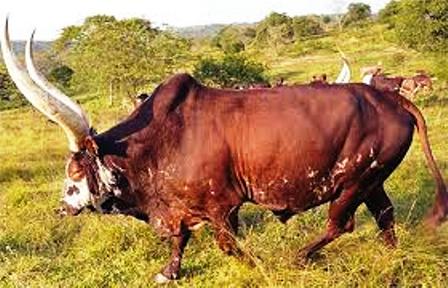
Typically, the average marrying age of a non-schooling Muhima girl was 16. Before the day of the wedding, she would be in a hut in the company of other girls and cry endlessly. When you passed near such a home and heard such wailing, you would know that somebody’s daughter was going to be married off.
While wailing, the bride would hold onto a pillar that supported the hut as her friends smeared her with butter to make her slippery so that the bridegroom found it difficult to carry her away on the day of okuhingira. She would be beaten and rebuked by her brothers and told to stop crying.
The bridegroom would then enter the kraal of the bride’s family and be conducted to the hut the bride would be standing and waiting in. He would then take her right hand and lead her to the assembled guests.
A strong rope was then produced by one of the bride’s relatives and tide to one of the bride’s legs. Sides were then chosen by the members of the bride’s and bridegroom’s clans and a tug of war would then take place. The bride’s clans would then struggle to retain their sister, and the bridegroom’s clan would strive to carry her off.
During this contest, the bride would stand weeping because she was being taken away from her old home and relatives.
All this time, the bridegroom would be standing by her, still holding her and when the final pull was given in his favour, he would slip the rope off her ankle and whisk her away, a few yards to a group waiting near with a cow-hide spread on the ground.
The bride would sit on the cowhide, and the young men would raise her up and rush off with her in triumph to the bridegroom’s parent’s house chased by friends and relatives.
Bahima brides used to undergo a number of changes during and months after the marriage ceremony. Prior to the ceremony, her head and pubic hair would be shaved.
A few months after the ceremony, she would return to her village and undergo a second shaving, have her nails trimmed and her ears pierced and jewellry added.
Virginity rewarded among the Bahima People of Uganda
In the hut the bride-to-be was not only stuffed with food but she was also given advice on marriage issues. Her grandmother was one of the people who played that role of a marriage counsellor. But the main role was played by her paternal or maternal aunties, Inshwekazi.
Among the Banyankole, the father’s sister was (and still is) responsible for the sexual morality of the adolescent girl. Her duty was to advise the girl on how to begin a home. More so, since in Ankole, girls were supposed to be virgins until marriage. In most instances, she did not have any experience in marriage at all.
Whenever the bride-to-be broke down and cried, given that she was going to live with total strangers, the Inshwekazi would comfort her, assuring her that all would be well.
“The other duty of the aunt was to prove the potency of the bridegroom by watching or listening to the sexual intercourse between the bridegroom and her niece. If a girl was found to be a virgin, she was rewarded with a young fat heifer,” Musinguzi says.
If the parents of the girl were aware that their daughter was not a virgin, this information was formally communicated to the husband by giving the girl, among other gifts, a perforated coin, usually five pence of the pre-colonial East African currency or another hollow object.
Likewise, if the bride was aware that she was not a virgin, she would also be given a hollow coin and politely asked to take it back home to her parents. However, the groom was never held accountable for not being chaste until marriage.
Wife by force among the Bahima People of Uganda
If a prospective bride did not like the suitor, he could resort to okuteera oruhoko, meaning he would force her to marry him hastily without her consent and much preparation.
The practice of okuteera oruhoko was characteristic of the traditional Ankole society but vestiges of it still appear. Society decried this practice but it was common and often got many a young man a wife. However, the offender had to be fined a hefty bride price.
There were various ways in which this practice was carried out.
One such way was by using a cock. A boy who wished to marry a girl who had rejected him, would get hold of a cock, go to the girl’s homestead, throw the cock on the compound and ran away.
The girl had to be whisked to the boy’s home immediately because it was believed and feared that should the cock crow when the girl was still at home, refusing to follow the boy or making unnecessary preparations, she or somebody else in the family would instantly die!
Another way was by smearing millet flour on the face of the girl. If the boy chanced to find the girl grinding millet, he would pick some flour from the winnowing tray used to collect the flour as it comes off the grinding stone and smear it on the girl’s face.
The boy would run away and swift arrangements would be done to send him the girl as it was feared that any delays and excuses could precipitate a calamity.
Other ways of okuteera oruhuko included the suitor putting a rope around the neck of the girl and then pronouncing in public that he had done so.
Another method was to put a plant known as orwihura on the girl’s head or sprinkling milk on the girl’s face while milking. The latter was only possible if the suitor and the girl were from different clans.
Oruhuko was a dangerous and degrading practice. It was usually tried by boys who had failed in the art of wooing a maiden. If such a suitor was not lucky enough to out run the relatives of the girl, he was bound to face their collective wrath.
If he escaped a thorough beating, he certainly had no way around the high bride price. He would be charged double or even more than the usual bride price rate. Moreover, the extra cattle which were charged were not refunded if the marriage collapsed.
Other Related Pages
Kenya Culture | Akamba | British Colonialists | Crafts | Cultural Business Meetings | Cultural Communication | Cultural Eye Contact | Cultural Gestures | Gift Giving | Cultural Law | Cultural Music | Cultural Space | Cultural Time | How to Talk in Kenya |Recent Articles
-
Garam Masala Appetizers ,How to Make Garam Masala,Kenya Cuisines
Sep 21, 14 03:38 PM
Garam Masala Appetizers are originally Indian food but of recent, many Kenyans use it. Therefore, on this site, we will guide you on how to make it easily. -
The Details of the Baruuli-Banyara People and their Culture in Uganda
Sep 03, 14 12:32 AM
The Baruuli-Banyala are a people of Central Uganda who generally live near the Nile River-Lake Kyoga basin. -
Guide to Nubi People and their Culture in Kenya and Uganda
Sep 03, 14 12:24 AM
The Nubians consist of seven non-Arab Muslim tribes which originated in the Nubia region, an area between Aswan in southern
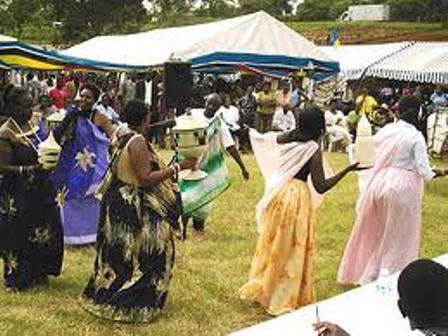
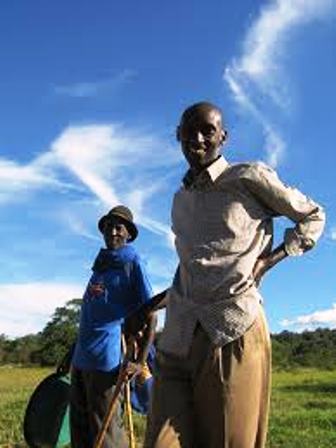
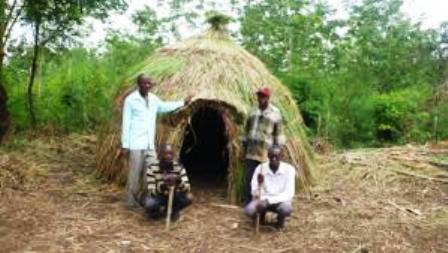
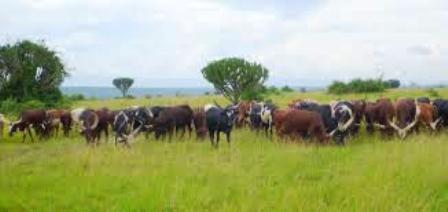
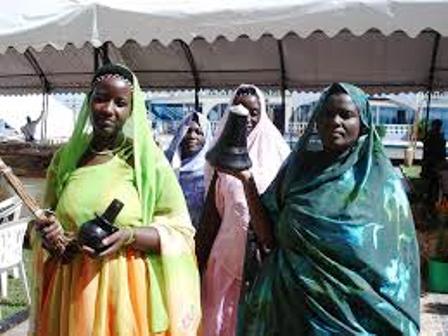
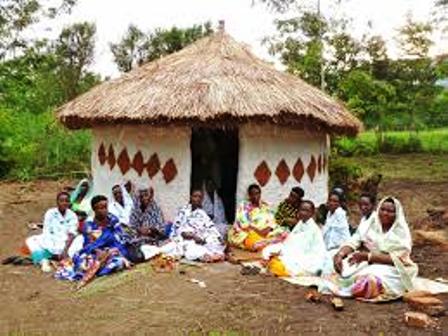
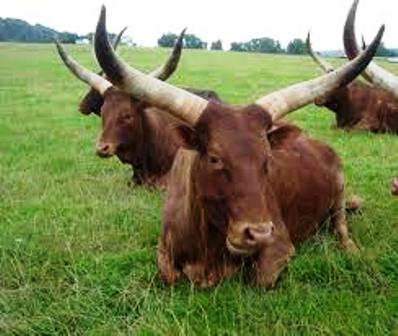
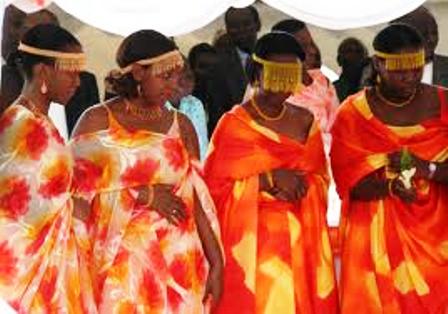
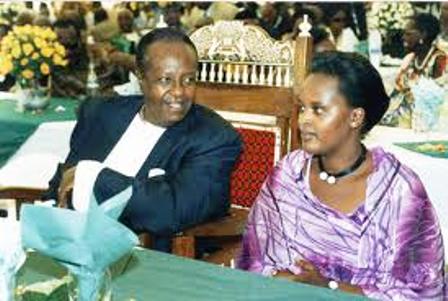
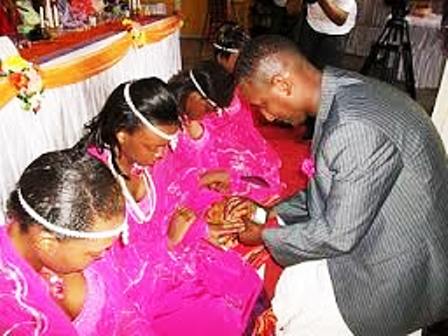
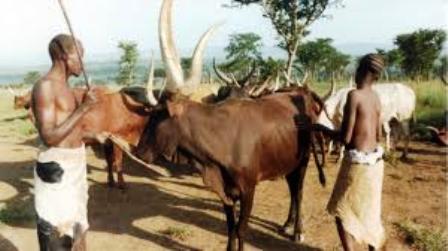
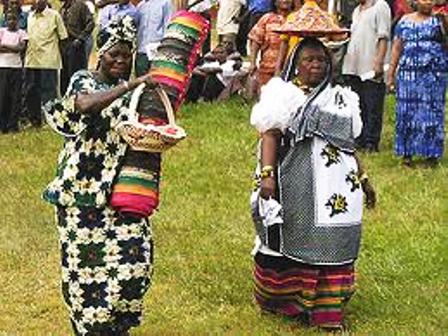
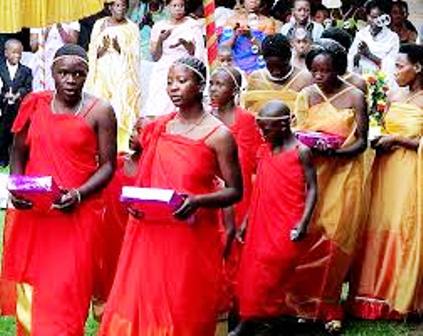
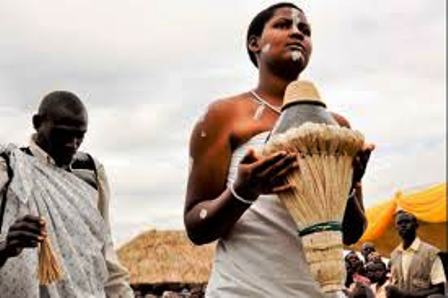







New! Comments
Have your say about what you just read! Leave me a comment in the box below.